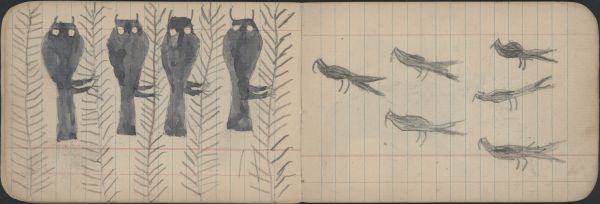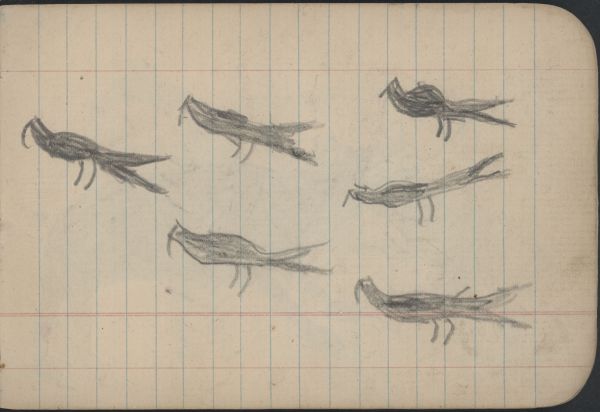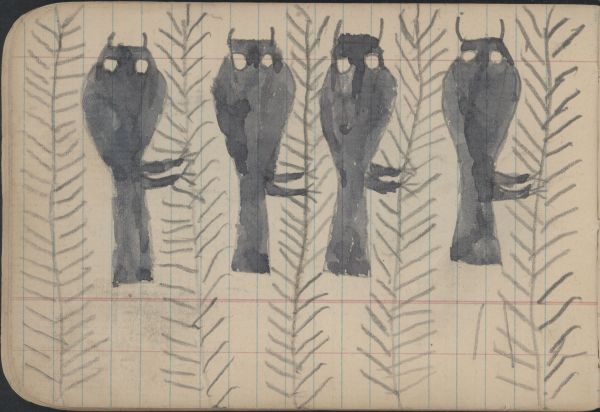BIRDS: Scissortailed Flycatchers (?); BIRDS: Four Owls Roosted in Trees
Ethnographic Notes
Right: This page is a flock of six birds with forked tails, drawn in profile. The elongated split-tail feathers are drawn with prominent Vees. All face the left. They are arranged three in a row, then two, and finally one. The scissor-tailed flycatcher is native to western Kansas, and the bird resembles the Cheyenne ledger artist Making Medicine's color drawings of scissortail flycatchers: See "Fowls of Indian Territory," 1875 (National Anthropological Archives). His series of seventeen birds includes a swallow-tailed kite, which resembles these birds, and a barn swallow. Barn swallows do congregate in flocks like these birds. Moore mentions swallow-tailed kites (1986: 185) as another bird with a forked tail. Media: They are drawn in pencil and filled with pencil. Left: Four owls roosted in leafless trees. These black owls on twiggy vertical branches or fir branches (drawn in pencil) have horns like great horned owls and prominent eyes. Their tails extend straight down, parallel to the vertical branches. This creates an almost abstract design. Their three claws are visible as they hold onto the roosts. Owls are indicators of the night world and the after-life in Cheyenne thought. The prisoners at Dodge were indeed close to death. The Cheyenne word for “ghost” is the same as the word for “owl” (Powell Sweet Medicine fn 440, quoting Petter, Dictionary, p. 1000). Powell goes on to describe ghosts as spirits derived from the dead, but not ghosts of specific people. The depiction of owls in ledger art is extremely rare and “surprising,” according to Powell (1984 letter). Making Medicine included a great horned owl in his “Fowls of Indian Territory” (Berlo 136). This image appears in the 2012 film Moonrise Kingdom as images painted on the adolescent hero’s tent. Media: Lead pencil and black ink


